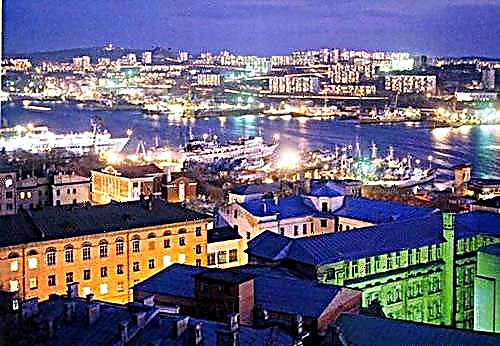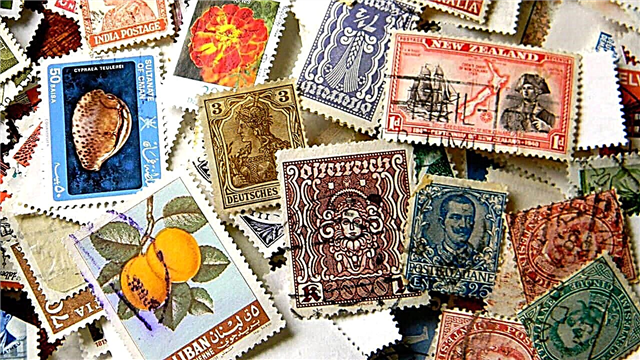Many European cities are an example of cleanliness and grooming. They are famous for their cultural sites and attractions, developed infrastructure and attractions. However, it happens that you come to a city advertised by travel blogs and travel agencies and it turns out that this is not paradise on Earth, but it was better at home.
We present you the top 10 most overrated cities in Europe according to a survey of users of Skyscanner, an online service for searching hotels and airline tickets.
10. London (5.8% of respondents disappointed)
 Queen's City has always been a popular tourist destination due to a wide range of entertainment, and a large number of attractions and cultural institutions such as Buckingham Palace, Westminster Abbey, Hyde Park, the British Museum, the National Gallery, etc.
Queen's City has always been a popular tourist destination due to a wide range of entertainment, and a large number of attractions and cultural institutions such as Buckingham Palace, Westminster Abbey, Hyde Park, the British Museum, the National Gallery, etc.
As one would expect in a city with so many people and vigorous economic activity, the cost of living is extremely high. Therefore, if you are counting on a budget trip - it is better to choose something less pathos and expensive. For the most modest lunch in London, you will have to pay about 10 pounds.
And so that you do not have to spend a tidy sum on travel from one attraction to another, experienced tourists advise you to buy an Oyster card, which is valid on all public transport. But even with her, the trip will cost 2-2.5 pounds, depending on the travel zone and time of day.
9. Budapest (6%)
 This cheerful, friendly city of Eastern Europe offers European aesthetics at affordable prices. The capital of Hungary is famous for its delicious meat dishes such as goulash, and also entices travelers with bewitching architecture.
This cheerful, friendly city of Eastern Europe offers European aesthetics at affordable prices. The capital of Hungary is famous for its delicious meat dishes such as goulash, and also entices travelers with bewitching architecture.
However, according to tourists, the streets of Budapest are full of people with no fixed abode.
According to statistics, in Hungary there are 30 thousand hontalan (homeless). Of this number, in Budapest, according to various estimates, from 6 to 10 thousand homeless people live. And the rows of mattresses spread right on the ground can shock people who want to see a clean and well-groomed city.
8. Lisbon (6.3%)
 Clean air, unusual architecture and delicious food are the three main, but not the only advantages of the sunny capital of Portugal. However, it fell into the selection of the most overpriced European cities due to dirty, littered streets (with the exception of the city center) and many abandoned houses. According to one of the tourists, Lisbon is like a grimy and groomed child, which, however, cannot be disliked.
Clean air, unusual architecture and delicious food are the three main, but not the only advantages of the sunny capital of Portugal. However, it fell into the selection of the most overpriced European cities due to dirty, littered streets (with the exception of the city center) and many abandoned houses. According to one of the tourists, Lisbon is like a grimy and groomed child, which, however, cannot be disliked.
7. Amsterdam (6.5%)
 Amsterdam successfully combines the charm of antiquity with the boiling energy of a modern business city and an atmosphere of freedom and good nature. It houses Schiphol Airport with one of the best duty free shops in the world.
Amsterdam successfully combines the charm of antiquity with the boiling energy of a modern business city and an atmosphere of freedom and good nature. It houses Schiphol Airport with one of the best duty free shops in the world.
However, the impression of the city of canals and tulips can be ruined due to crowds of tourists filling the streets with old buildings, a huge number of cyclists that often disturb pedestrians, as well as high prices.
6. Prague (7.4%)
 This ancient Czech city is known for its beautiful architecture (St. Vitus Cathedral, the Dancing House, Tyn Church, etc.) and excellent cuisine. Recently, however, many tourists complain about a large number of beggars and unceremonious deception everywhere - from taxis to cafes and currency exchangers.
This ancient Czech city is known for its beautiful architecture (St. Vitus Cathedral, the Dancing House, Tyn Church, etc.) and excellent cuisine. Recently, however, many tourists complain about a large number of beggars and unceremonious deception everywhere - from taxis to cafes and currency exchangers.
The level of service in hotels (with the exception of four- and five-star ones) leaves much to be desired, and on excursions you have to constantly pay for admission to a particular attraction, although the office says that “everything is included in the price of the trip.”
5. Bruges (7.6%)
 “This is a gingerbread town,” some tourists admire. “Well, this hole is your Brugge!”, Others object to them. And both sides are right. Indeed, on the one hand it’s a sweet, small town where you can taste good beer, great chocolate and go on canals on a tourist boat. Or wander through the clean streets, admiring the neat houses and the Belfort tower, famous for the movie "Bury in Bruges."
“This is a gingerbread town,” some tourists admire. “Well, this hole is your Brugge!”, Others object to them. And both sides are right. Indeed, on the one hand it’s a sweet, small town where you can taste good beer, great chocolate and go on canals on a tourist boat. Or wander through the clean streets, admiring the neat houses and the Belfort tower, famous for the movie "Bury in Bruges."
And on the other hand, to get acquainted with all the interesting places in Bruges, a couple of hours is enough for you. And what to do the rest of the day and night, given that there are no discos and nightclubs in the city?
4. Rome (7.8%)
 The city of the first Christian saints and tyrants, such as Nero and Caligula, is the personification of ancient history for many people. Here, at every step, there are monuments of the past adjacent to objects of modern and well-developed infrastructure.
The city of the first Christian saints and tyrants, such as Nero and Caligula, is the personification of ancient history for many people. Here, at every step, there are monuments of the past adjacent to objects of modern and well-developed infrastructure.
The capital of Italy acts as the headquarters of an eclectic multitude of international and local enterprises. There are many boutiques of the most famous designer brands, such as Gucci, Biagiotti, Trussardi, Giantranco Ferre, etc.
However, huge crowds of people at every little-known attraction, frequent robberies of tourists, as well as “fragrant” rubbish and a huge amount of graffiti on the streets disappoint those who expected from the “Eternal City” an atmosphere of not only noble antiquity, but also spiritual and external beauty .
3. Barcelona (8.4%)
 It is considered one of the most successful urban brands in the world and is a center for many tourists. Here appeared one of the most famous football teams in Europe, which bears the same name.
It is considered one of the most successful urban brands in the world and is a center for many tourists. Here appeared one of the most famous football teams in Europe, which bears the same name.
As you would expect, the cost of living in Barcelona is very high. For example, a visit to the Acentura park will cost 50 euros, while for each attraction there are very long lines.
There are many beggars on the streets of Barcelona, and street crime is booming. So if you go on a walk around the city, do not keep in sight expensive things (watches, a camera, a gold chain, a mobile phone, etc.).

However, there is something in Barcelona that you will not see in other cities of the world. These are the architectural masterpieces of Antonio Gaudi, who is called a mad architect. And looking at the “Hall of a Hundred Columns” in Park Guell, the wavy shapes of the facade of the House of Mila, bizarre chimneys in the Palace of Guell, as well as other architectural “excesses”, you will understand why Gaudi gave such a nickname.
2. Berlin (15.5%)
 For many tourists, Berlin leaves a double impression. On the one hand, it is an old European city with a lot of attractions, museums, good restaurants and shops.
For many tourists, Berlin leaves a double impression. On the one hand, it is an old European city with a lot of attractions, museums, good restaurants and shops.
However, those who wish to see Berlin as the focus of a true German “ordnung,” order and purity, will be greatly disappointed. Yes, many streets of this city are respectable, “licked” to shine and calm. But the farther from the center, the easier it is to turn “wrong”, finding yourself in a kind of Arabian “Harlem”. Or meet with aggressively-minded Middle Eastern youth, who often arrange clashes with the police.
1. Paris (28.7%)
 Since time immemorial, Paris has been a favorite of many travelers, celebrities and actors due to its many historical places and architectural sights.
Since time immemorial, Paris has been a favorite of many travelers, celebrities and actors due to its many historical places and architectural sights.
For example, in 2016, 7.4 million visitors were registered in the Louvre, making it the most visited museum in the world (last year he lost this title to a Chinese “colleague”).
Paris is also proud of one of the best football clubs in the world (Paris Saint-German). However, with all its merits, it was the City of Love that led the list of the most disappointed tourists in the cities of the world. There are several reasons for this:
- A huge number of migrants, which are almost more than native Parisians. A third of Paris is a place where a lonely tourist or just a white person is scared to go. Such areas, in particular, include Barbes and Chateau Rouge in the 18th arrondissement of the city.
- Dirty streets with lots of graffiti and rubbish underfoot.
- Many beggars and people with no fixed abode sleeping right on the streets.
- Bad criminal situation. Thimbles, burglars, hashish sellers are just a small part of the criminal elements that can easily be found on the streets of Paris.
- If you are accustomed to the idea that Paris is the capital of fashion, you will be disappointed with the appearance of Parisians, who mostly dress discreetly and not very stylishly. And many visitors still wear their national clothes, which makes the city look like some kind of African province.
So if you are looking for romance, safety and style, then pay attention to less publicized and more peaceful places than Paris. For example, in one of the safest countries in the world.












